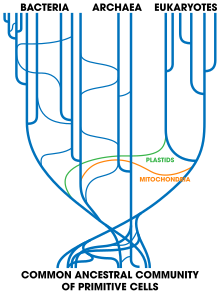Change

Species are subject to change, whether by evolving into new species, exchanging genes with other species, merging with other species or by becoming extinct.
Speciationedit
The evolutionary process by which biological populations evolve to become distinct or reproductively isolated as species is called speciation. Charles Darwin was the first to describe the role of natural selection in speciation in his 1859 book The Origin of Species. Speciation depends on a measure of reproductive isolation, a reduced gene flow. This occurs most easily in allopatric speciation, where populations are separated geographically and can diverge gradually as mutations accumulate. Reproductive isolation is threatened by hybridisation, but this can be selected against once a pair of populations have incompatible alleles of the same gene, as described in the Bateson–Dobzhansky–Muller model. A different mechanism, phyletic speciation, involves one lineage gradually changing over time into a new and distinct form, without increasing the number of resultant species.
Exchange of genes between speciesedit
Horizontal gene transfer between organisms of different species, either through hybridisation, antigenic shift, or reassortment, is sometimes an important source of genetic variation. Viruses can transfer genes between species. Bacteria can exchange plasmids with bacteria of other species, including some apparently distantly related ones in different phylogenetic domains, making analysis of their relationships difficult, and weakening the concept of a bacterial species.
Louis-Marie Bobay and Howard Ochman suggest, based on analysis of the genomes of many types of bacteria, that they can often be grouped "into communities that regularly swap genes", in much the same way that plants and animals can be grouped into reproductively isolated breeding populations. Bacteria may thus form species, analogous to Mayr's biological species concept, consisting of asexually reproducing populations that exchange genes by homologous recombination.
Extinctionedit
A species is extinct when the last individual of that species dies, but it may be functionally extinct well before that moment. It is estimated that over 99 percent of all species that ever lived on Earth, some five billion species, are now extinct. Some of these were in mass extinctions such as those at the ends of the Ordovician, Devonian, Permian, Triassic and Cretaceous periods. Mass extinctions had a variety of causes including volcanic activity, climate change, and changes in oceanic and atmospheric chemistry, and they in turn had major effects on Earth's ecology, atmosphere, land surface and waters. Another form of extinction is through the assimilation of one species by another through hybridization. The resulting single species has been termed as a "compilospecies".
Comments
Post a Comment